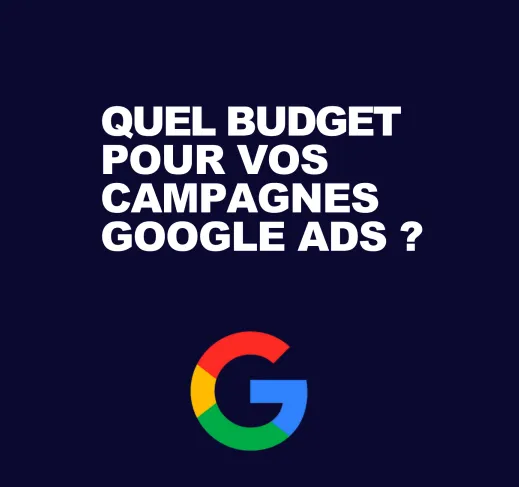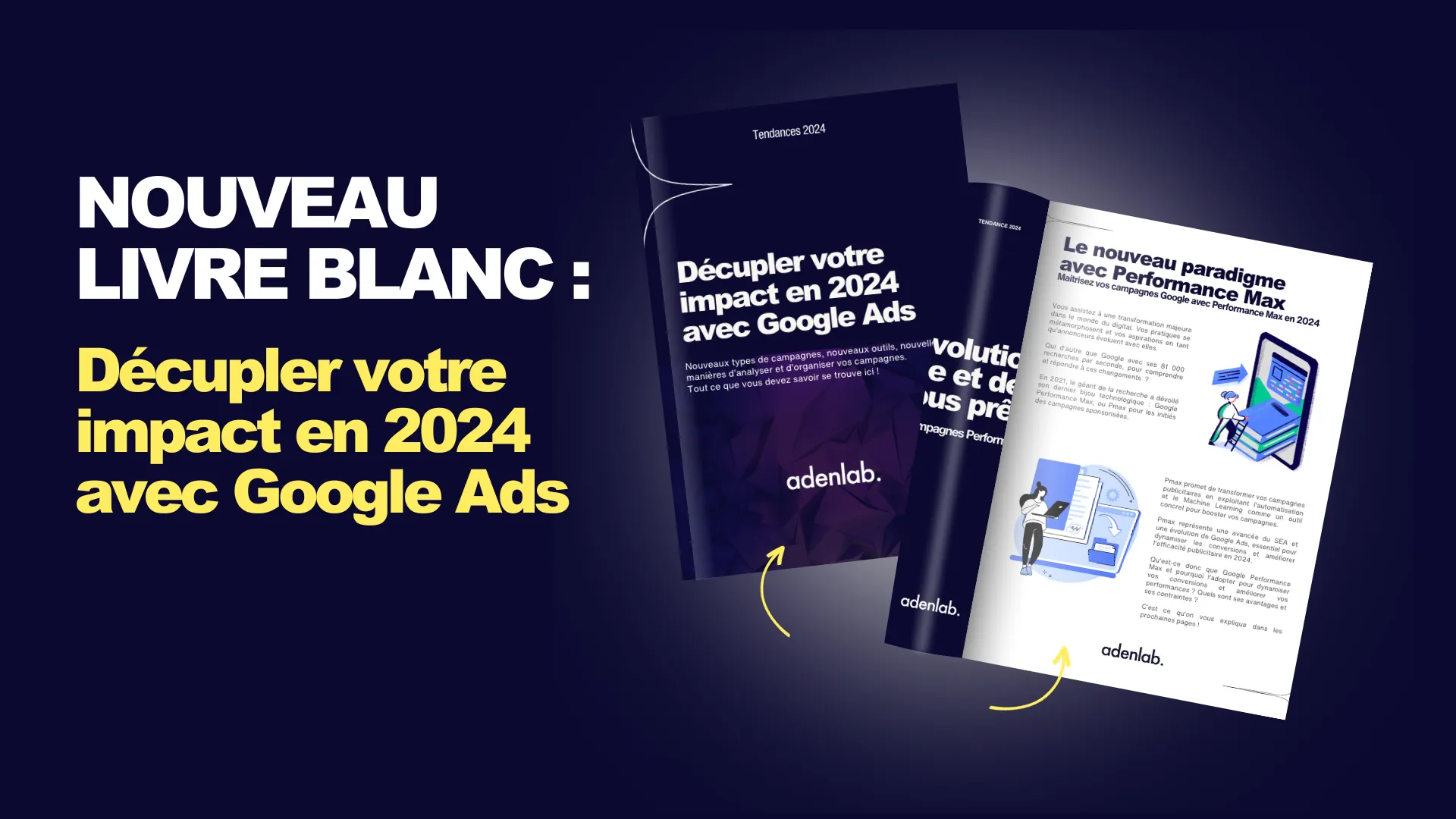Sakura Sport case study: +61% ROAS in just 6 months!


Discover how Adenlab increased ROI to 4 in just 5 months.
Created in 2021, the Sakura Sport brand specializes in badminton equipment for all levels.

Find out how Adenlab and its teams increased sales by +44% while boosting conversions by +12%.
The Ascott offers an accommodation concept that combines a wide range of hotel services with the conviviality of a spacious, comfortable apartment with a fully-equipped kitchen.

Find out how Adenlab and its teams increased sales by +16% while boosting conversions by +11%.
Beauty Coiffure is a company that never stops striving to offer you the best brands in hairdressing, beauty and nail care at the best prices.

Discover how Adenlab increased conversions by 10% in just 3 months.
CartoucheMania is a French company, based in Paris, specializing in the sale of ink cartridges and laser toners over the Internet since 2005.

Discover how Adenlab and its teams increased sales by +70% while optimizing conversions by +65%. Pharmashop Discount is an online parapharmacy offering over 18,000 items, covering a vast assortment of beauty, health, baby and even veterinary products. Find out more about our digital marketing agency please do not hesitate to contact us

Find out how toincrease your impact in 2024 with Google Ads!
New campaign types, new tools, new ways of analyzing and organizing your campaigns. Everything you need to know is here!

Use our performance simulator to find out the expected results of your Google Ads campaigns.
Before getting to the heart of the matter, and giving you several keys to establishing your Google Ads budget, we feel it’s important to remind you of the state of the advertising market in France and around the world.
In fact, according to eMarketer’s “Worldwide Digital Ad Spending 2023” report, digital advertising investment will grow by 10.5% worldwide in 2023.
Thisgrowth also means that 67% of advertising budgets are now directed towards digital! For the first time this year, almost two-thirds of all advertising expenditure will be invested in digital.
67% of advertising spend is now on digital!
So how is investment in digital advertising distributed in France? And what weight does Google Ads have in advertisers’ budgets?
43% of web advertising spend will be on search in 2023, and 41% in 2024 (search engines).
We might as well tell you that this budget is allocated to Google, which is the favorite search engine of the French. In fact, Google holds 89.95% of the search engine market share, followed by Bing with 5.12%.
With this information on the state of the digital advertising market in France, you’re more or less in the clear about the breakdown of the Media Mix.
Now that you’ve done that, you know that your presence on Google is important and that you need to be visible on this channel, which will certainly bring you a lot of customers and constant sales.
If you need to estimate your Google budget: book an appointment with our Google Ads experts
With what budget? What indicators do you need to master and take into account? What are your objectives and how can you achieve them with Google Ads? And what do you need to analyze, monitor and improve when you launch your Google Ads campaigns?
Depending on the campaigns you run on Google Ads, you’ll be able to target different objectives: traffic, awareness, sales… and you’ll have access to different ad formats (text, display, shopping).
With the many tools and bidding strategies offered by Google Ads today, it can be difficult to decide how to set an effective budget for your campaign. After all, it’s important to remember that Google Ads works on a bidding system, which will help you ensure the visibility of your ads and reach your target.
For e-commerce, the objective is often to increase sales. A minimum return on advertising investment is expected (the famous ROAS) or a maximum customer acquisition cost (CAC = customer acquisition cost or CPA = cost per conversion).
We can even speak of an objective and a constraint.
The objective being sales growth and the constraint ROAS.
The second constraint in this case will be your daily budget, which will limit the distribution of your campaigns.
However, if your campaigns reach your sales targets while respecting your ROAS: there would theoretically be no reason to limit the budget for your campaigns since they are profitable.
The objective of your campaigns could simply be to attract more traffic to your website, or to increase the number of subscribers to your site.
And as you’ve understood, it all depends on your activity and your needs in terms of business and marketing.
It is calculated by dividing the total revenue generated by a campaign by the total cost of that campaign.
ROAS = Total revenue / Total campaign cost
Ex: You want to spend €100 on Google Ads and want it to earn you €1000. In other words, multiply your advertising investment by x10
In this case, you would like to obtain a ROAS of 10 (or 1000% in your Google Ads campaign parameters).
Which bidding strategy: ROAS vs CPA (CAC)
It is calculated by dividing the total amount you spend on your campaign by the total number of conversions in that campaign.
CAC = Total costs / No. of conversions
In terms of management control, it is sometimes simpler to use the cost of acquiring a customer rather than ROAS, which requires knowledge of your margins and good segmentation of your campaigns.
In fact, your products do not all have the same margins, and consequently your campaigns should not have the same ROAS objectives.
With these objectives and constraints in mind, it’s time to make some simulations and estimates.
We’ll then look at which bidding strategy is best suited to your needs, and which solutions Google Ads offers to help you achieve them.
To set your budget, it’s always a good idea to use the Google Ads simulator. But you can also use competitive intelligence tools to situate yourself in relation to your competitors.
The keyword planning tool is a good starting point for making a few estimates and finding out the traffic potential you can obtain via Google Ads campaigns.
The tool goes quite far. It offers you simulations by integrating your conversion values and the conversion rate of your campaign. It then calculates the result on your sales and the return on investment you’ll be able to achieve.
WARNING: this is a simulation! Reality is often very different from simulation.
Here’s the result of a simulation we ran. For the example, we searched for “baby strollers” and “compact strollers”.
In the simulation above, you’ll find the conversion rate (1%) and conversion value (200€) I’ve set.
The simulator tells me that with a daily budget of €110, my conversion value (or sales) could amount to €17k. That’s a ROAS of 5.6 and CPA (CAC) of 36€.
In this case, your monthly budget for this campaign would be €3,000 per month.
Once you’ve defined the monthly budget limits for your campaign, you’ll choose a campaign type that will display your ads. You can choose Shopping campaigns, Performance Max campaigns, Text campaigns with relevant keywords or the products you want to sell.
Don’t forget that your budget and spending on Google Ads depend on the bids you’re willing to put on a product or keyword.
Average CPC is the price at which you’ll acquire clicks on a given keyword or product on Shopping and Performance Max. The Max CPC is the maximum bid you’d like to set (in manual management).
This same cost-per-click (CPC) will vary according to the desired objective of your campaign. Generally speaking, it will be higher when you’re faced with a search from an Internet user whose intention is to buy your product.
Apart from campaigns whose bids are managed manually, it’s Google Ads’ automatic bidding strategies and Machine Learning that will apply the bid for your keywords or products.
And just what are the Google Ads automatic bidding strategies that will enable you to reach your objectives and control your daily expenses?
To achieve your goal, you’ll need to choose the right campaign type and bidding strategy. Here are the different strategies offered by Google Ads.
To help you choose your bidding strategy, let’s take the case of an e-commerce business that needs to display its products on Shopping format. In this case, the ads will be displayed as images (of the products) thanks to the product feed imported into Google Merchant Center.
Feel free to read our article on ROAS vs. target CPA , which will be a good complement to the information below.
In the example below, products are displayed using a Shopping Standard campaign or a Performance Max campaign.
Since the objective of an Ecommerce business is often to sell products, you can use 2 strategies:
Objective 1: Increase the number of Conversions with a CPA constraint (Cost per Acquisition, equivalent to CAC: customer acquisition cost)
Objective 2: Increase conversion value with a ROAS constraint
We talk about them here to illustrate bidding strategies, but you should know that it’s not (anymore) this type of campaign that we recommend for Ecommerce, but rather Performance Max campaigns.
With Shopping Standard campaigns, you’ll be able to exploit 3 bidding strategies:
1. Target ROAS: The automatic bidding strategy with a target ROAS
2. Maximize Clicks: The automatic bidding strategy to maximize clicks and therefore traffic to your site
3. Manual bidding: the manual bidding strategy where you control the bidding manually
For Google Ads’ historical text ads, bidding strategies have also been automated to help you reach your objectives:
Above are the 4 bidding strategies you can implement for your ads on the Search Network and your text ads:
1. Conversion: Like the automatic Performance Max strategies, this involves increasing the number of Conversions with a CPA constraint (Cost per Customer Acquisition)The automatic auction strategy with a target ROAS
2. Conversion value: The same applies to conversion value (increasing your sales) with a ROAS constraint.
3. Clicks: this option allows you to obtain a volume of traffic with an optional maximum bid constraint.
3. Impression rate: This option ensures the visibility of your ad on the search engine.
You can therefore choose between several strategies, while limiting your daily budget and “imposing” a constraint of Return on Investment or customer acquisition cost.
In this way, Google Ads’ algorithms will be able to assign the right bid to your campaigns and ads so that you get enough visibility and meet your chosen objective.
Magic doesn’t always happen, and your competitors are there to remind you. That’s why you need to monitor and analyze your campaigns on a regular basis. Which brings us to the last part of this article: Measuring and monitoring your performance indicators.
Measuring and tracking the key indicators of your campaigns is a recurring and important management task. Fluctuations in traffic, conversions and external events are all factors that need to be taken into account if you are to achieve your objectives.
Once you’ve set your budget, chosen your campaign type and adjusted your bidding parameters, you’ll need to monitor its performance.
In addition, it will be important to understand how to maintain your performance over time.
Here are a few tips:
Setting a budget for your Google Ads advertising campaigns largely depends on your objectives and the type of products and services you offer.
Knowing your financial indicators and constraints, such as the maximum cost of acquiring a customer or the target ROAS of your campaigns, is essential for good management and allocation of your budgets.
Your Cost of Customer Acquisition or Return on Advertising Investment depends on your bidding strategy and the average cost per click (CPC) of your keywords or products on Google Shopping. Mastering these components will help you achieve your objectives.
You’ll need to monitor the overall performance of your account and the campaigns you’ve created, so that you can react according to the results, but also to the market (yes, you’re not alone, and the competition is fierce).
Finally, by tracking your historical data and implementing a testing and optimization strategy, you can maintain the effectiveness of your Google Ads campaign over the long term.
Don’t hesitate to contact us if you need an update on your Google Ads strategy and budget allocation.
We carry out a complete diagnosis of your strategy and campaigns.
Fully supported by Adenlab, you pay nothing.
Our free preliminary audit will give you a clear picture of the current state of your campaigns. It will enable you to identify and plan the evolution of your performance on your acquisition channels.

The sales are here, and with them an exciting wave of freshness! Are you ready to exploit this refreshing breeze to boost your sales and leave your competitors out in the cold?

In this atmosphere of glittering offers, your customers are on the lookout for promotions. It’s the perfect opportunity to boost your sales with attractive offers.
The sales frenzy is already making itself felt on Google, from stylish outfits to the latest high-tech gadgets. Searches are soaring, and users are eager to discover the hidden treasures you have to offer.
Dear e-businesses, get ready to boost your sales and shine brightly. The official winter sales dates for 2025 start on January 8. Sales are an unmissable opportunity to make your brand shine.
Are you wondering how to concoct an effective strategy to take full advantage of this period full of promise and opportunity?
Don’t worry, we’re here to guide you through the development of an SEA strategy on Google Ads, adapted to this sparkling season. So, are you ready to turn the sales into a dazzling event?
According to Ecommerce Nation‘s study, here are the average spending statistics for the winter sales by category. These statistics may be of interest to you and help you anticipate the 2025 winter sales.
The sales are just around the corner, and already the search is heating up, as this Google Trend graph shows:
As I mentioned in the title, winter sales are a veil of frost that reveals your brand and your products to as-yet-unknown customers, ready to be captivated!
Increased traffic is a key element to consider. Searches related to the winter sales intensify considerably before and during this period, offering a valuable chance to attract a wider audience for your e-commerce.
According to a study by Google, searches related to the winter sales have exploded, with a meteoric rise of 1,200% in the weeks leading up to the start of the sales.Also over the same period, traffic on e-commerce sites during the winter sales has increased impressively, with an average rise of 25% compared with an ordinary period.
As Google Ads experts for e-commerce, we fine-tune our tactics to propel you to the top during the winter sales.
During this season, the art of transforming your commercial offers and promotions is vital.
Here are a few strategic keys to forging an infallible SEA approach during the sales season:
High-quality, attractive visuals: Clear, high-resolution images attract the eye and increase click-throughs. Take advantage of new Merchant Center and Product Studio features
By incorporating these tactics, you’ll be ready to navigate the snowy landscape of winter sales with flying colors, reaping the rewards of your strategic efforts.
In short, the winter sales are an ideal time for e-tailers to unleash their full potential, but the key to success lies in an ice-cold ATS strategy. With growing consumer interest and the remarkable performance of previous years, get ready for a sales season of abundant benefits. Stay tuned for our next article and keep up to date with the latest developments in SEA! It’s all here!

Paid search is an essential strategy for companies wishing to generate traffic quickly and increase conversions. With Google Ads, it’s possible to target potential customers precisely, based on their online searches and behaviors.
But how do you set up an effective SEA campaign? How much does it cost? How to optimize ROI?
In this comprehensive guide, we’ll explain everything you need to know about paid search, its benefits, how it works and the best strategies for success.
Paid search, also known as SEA (Search Engine Advertising), is an online advertising technique that displays sponsored ads on search engines such as Google or Bing.
Unlike SEO (Search Engine Optimization), which takes time to produce results, SEA enables you toappear immediately at the top of the results by bidding on keywords.
Investing in paid search has many advantages for a company:
✅ Immediate visibility: your ads appear as soon as you launch your campaign.
✅ Precise targeting: choice of keywords, location, age, interests…
✅ Total control over budget: you define your cost-per-click (CPC).
✅ Real-time tracking and optimization: analyze and adjust your ads according to their performance.
✅ Conversion boost: attract qualified leads and maximize your ROI.
🔹 Case in point: an e-tailer selling shoes can target web users searching for “buy cheap Nike sneakers”, guaranteeing ultra-qualified, ready-to-buy traffic.
Google Ads works on a bidding system. You can set a maximum price you’re willing to pay per click on your ad. But above all, you can use automatic bidding(Smart bidding) to optimize your campaigns and reach your objectives.
But it’s not just a question of budget! Google assigns a Quality Score based on :
👉 The higher your Quality Score, the less you’ll pay to be well positioned!
Some automatic recommendations are offered in your accounts, but beware: not all of them need to be implemented!
There are several formats to suit every purpose:
| Campaign Type | Target |
|---|---|
| Search | Targeting on Internet users’ keywords |
| Display | Visual ads on partner sites |
| Shopping | E-commerce product promotion |
| YouTube Ads | Video ads before and during videos |
| Performance Max | Advanced campaign automation |
💡 Tip: Performances Max campaigns have been around since 2023. These are the most advanced campaigns in terms of automation and distribution. In fact, with a single Google campaign, you can be visible on the search engine (Search), the Display network with your images and banners, and on Youtube: maximum visibility!
The cost of a Google Ads campaign depends on several criteria:
📌 CPC (Cost per Click): You pay only when the user clicks.
💡 Example: a lawyer might pay €30/click on “avocat Paris”, while an e-commerce might pay €0.50/click on “montre connectée”.
👉 O ptimizing your campaigns is essential to making the most of your budget!
Click here for our complete article on how to set up a Google Ads budget and establish a Google Ads price.
To maximize your return on investment, here are some best practices:
✅ Choose your keywords well: use Google Keyword Planner to identify profitable queries.
✅ Write impactful ads: highlight your added value and a clear CTA.
✅ Optimize Quality Score: improve your landing pages to lower your costs.
✅ Test different ads (A/B Testing) to see what works best.
✅ Analyze results with Google Analytics and adjust bids accordingly.
📌 Example: If an ad shows a low CTR, test a new tagline or another CTA.
❌ Not defining clear objectives: conversions, leads, traffic…
❌ Neglecting performance tracking: without analysis, it’s impossible to optimize.
❌ Choosing the wrong keywords: aiming too broadly leads to unnecessary costs.
❌ Not testing different ads: A/B Testing is essential!
💡 Correct these mistakes to avoid wasting your budget.
| SEO (Search Engine Optimization) | SEA (Search Engine Advertising) |
|---|---|
| Time-consuming results | Immediate visibility |
| Long-term sustainability | Cost as long as ads are running |
| Free (excluding optimization) | Chargeable depending on competition |
🎯 Ideally, combine SEO + SEA to maximize your presence on Google!
Yes, if it’s well optimized. A well-targeted campaign can generate excellent ROI.
Some industries spend thousands of euros a day. If you’re just starting out, it’s enough to get you traffic and test your first campaigns.
The two are complementary. SEA is ideal for the short term, while SEO is a sustainable strategy.
Paid search is a powerful strategy for generating qualified traffic and increasing conversions. Properly mastered, Google Ads can generate an excellent return on investment.
🔥 Need expert support for your Google Ads campaigns? Contact Adenlab, your agency specialized in paid search!